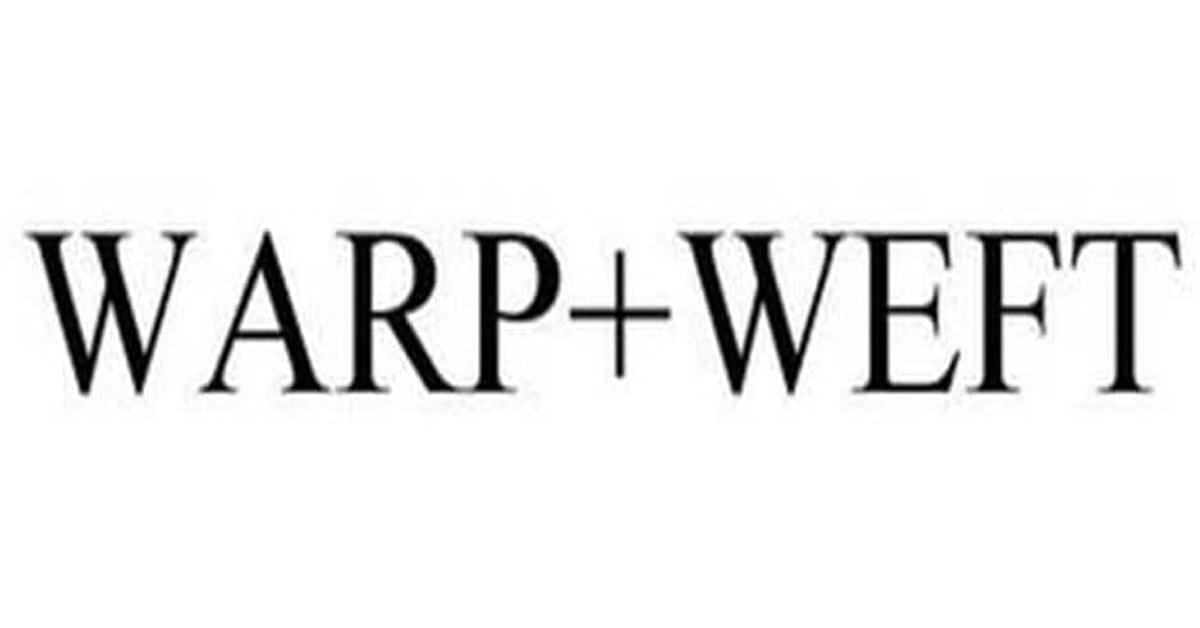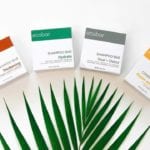Around the world, fashion is regarded as an important component of culture. It is viewed as a reflection of a country or group’s identity. It also differentiates social and civil statuses of individuals or families in communities. Moreover, it serves as a means of personal expression, an element that connects self to the outside world.
Fashion is associated to a lot of things. From our body’s protection to art. And while its function was seen positively for years, its shady impact on the environment is undeniable. Is there a need to rethink the way you wear your clothes?
The Rise of Sustainable Fashion
The fashion industry is growing so rapidly. This is due to the so-called “fast fashion”— the inexpensive rapid mass production of clothes in response to latest trends. The idea of this is to provide fashion collection to the masses, possibly copying designs from traditional fashion houses (which produces clothes on seasons only), and sells them at a very low price. Fast fashion clicked instantly as people wanted to look “in” without spending too much. The social media has contributed a lot to its momentum, too, on which people do not usually reuse outfits for different feeds.

Despite the hype, disastrous impacts of the fashion industry also skyrocketed due to fast fashion. It is even considered as the second largest polluter in the world, just after the oil industry. It consumes water, accumulates wastes, degrades the soil, destructs the forests, emits harmful gases, and produces chemicals that affect all life forms. While these facts are already convincing on their own, let us roam around places and see how fashion has deteriorated the planet.
Harmful Impacts of Fashion
Water consumption
The problem starts with the production. To produce one kilogram of cotton, you will need about 20,000 liters of water. In India which is an enormous exporter of raw materials, they use 22,500 liters of water each day every year for cotton production. Meanwhile, over 100 million from their population do not have access to safe water, a sad irony we can see in almost every Third World.
Use of chemicals
The textiles produced in factories undergo processes. It needs to be treated, bleached and dyed to produce the final product. However, these practices involve the use of harmful chemicals such as lead, arsenic, and mercury. It later goes to the river streams and reaches the oceans.
Waste generation
Due to fast fashion, an average Western family throws away 30 kilograms of clothing each year. Only 15% of this goes to recycle bins and donations, while the remaining 85% goes directly to landfills or incinerations. But wait, there’s more! Clothes can take about 200 years to decompose, as most of what we wear is made of synthetic fibers.
What should we do then? Since staying uncovered is not a possible option, we have to think of sustainable ways to style ourselves with clothes. The good thing is brands promoting sustainable fashion are now emerging in the market. One of which is the Warp+Weft.
The Story of Warp+Weft
Warp+Weft was launched in 2017 by young founder and CEO, Sarah Ahmed. But unlike any other denim brands, this budding brand, as the Forbes describes it, “is on a mission to create the best sustainable denim in the world.”
Founder and CEO Sarah Ahmed was aware that one of the most intrigued sector in fashion industry are denim producers, as they consume tons of water and they need to dye the materials for its final product. However, Ahmed is committed to change that notion into resorting sustainable processes in her products and processes. In fact, as of February 2020, they already saved 572 million gallons of water as they implement newer technologies and reimagine ways to conserve resources and give back to the environment. They claimed to use only 10 gallons of water for a pair of Warps compared to the 1,500 gallons from a normal pair of jeans.
Warp+Weft adheres to creating symbiotic relationship with the planet. This is evident in their innovative facilities and state-of-the art. They make sure that they are fully compliant with the International Social and Environmental & Quality Standards, from which they carefully base their ethical practices, fair wages, and working environment.
Warp+Weft is very transparent when it comes to their products and processes. They do not just put tags that says “sustainable clothing” or “100% organic”. They also brief consumers from their website the state-of-the-art equipment and technologies, including the processes from which they are primarily used.
The company is very dedicated in inspiring and serving its clients, too. Aside from influencing them to go sustainable, they also craft jeans with premium quality. They use technologies that will make the product last longer, while preserving its quality for long periods of time.
Moreover, Warp+Weft is known for its inclusive sizing. They have as many as 75 sizes, shapes, and heights represented in their products from women, men, and kids. They are also known for staying true with the sizing.
Denim Done Right: Warp+Weft’s Production Process
Speaking of processes and state-of-the-art equipment, Warp+Weft makes sure everything is done right from the choice of raw materials to the final touches. The clothes undergo three processes which includes cotton processing, additives and dyeing, and assembling and finishing.
In the first stage, they ensure the finest quality of cotton as their raw material is assured to have been sourced, primed and processed responsibly for optimal purity.
They use Amsler Technology to harvest 1.6 million kilograms of yarns per month. Single yarns of 5.5 to 18 singles are made using their Lycra and T400®, and the weaving is done by their Belgium, Italian and Swiss technology.
In the second stage, they use the most efficient equipment such as the two 24-Ropes dyeing machines with 140,000-meter capacity. Using this will treat larger volumes of materials while using lesser resources at a one-time run. They also use YILMAK machines in dyeing to maintain the consistency of colors. Moreover, they use the cleanest and most eco-friendly indigo dyes, Dystar Germany Liquid Indigo, whenever possible to sustain their claims.
Lastly, they combine machine and human artistry to finish their denim to a sustainable and fashionable wardrobe.
How Sustainable is Warp+Weft?
People living in cities at least have a pair of denims. It is simply a fashion staple and one of the few types of clothing that goes with every trend, with every gender preferences. But we cannot also deny the fact that it is one of the main causes of environmental damages. With that in mind, Warp+Weft committed to give premium quality jeans without necessarily harming the environment. They are true to their claims of sustainable fashion. Here’s why.
First, they design their processes to be eco-friendly and efficient, using only as much as 10 gallons of water in the over-all production of a pair of pant. They saved about 99% of water from the original consumption of 1,500 gallons of H2O by traditional fashion houses.
Second, they monitor everything from sourcing materials to finishing products and making sure that everything is of optimal quality. They are also very particular with ecological and ethical practices to minimize, as much as possible, water and carbon footprints.
Lastly, the finished products surely will last for years as they are crafted with love and care. They do not stretch and change shape easily, unlike other brands of the same price.
Most Popular Warp+Weft Products
Corporate or casual, Warp+Weft is a true fashionable denim brand. They ensure perfect fitting and has inclusive sizing for all ages, and sexes.
For men, the crowd favorites are the HND Skinny Highlands, AMS Slim Asphalt, ORD Straight Smoke, HND Skinny Asphalt, AMS Slip Playa, AMS Slim Dark Navy, AMS Slim Capers, AMS Slim Steel, HND Skinny Smoke, and ORD Straight Capers.
They have variations for skinny, slim, straight, joggers, chinos, corduroy, jackets, shorts, big and tall, and flextwill. Men who have an eye for fashion can tell that the styles and quality of this brand is world class.
Persons of both skinny and plus sizes also love the Warp+Weft brand. They have sizes from the regular 00-24 to the plus 14-24. This is a good start to live with the brand’s commitment to be inclusive in sizes and shapes.
For plus sizes, some of the favorites are the CDG PLUS Vintage High Rise Straight in Palais Royale, the JFK PLUS Skinny, the OAK PLUS Straight, the CDG PLUS Vintage High Rise Straight, and the NCE PLUS Wide Leg.
For sizes 00-24, more consumers are drawn to the CDG Vintage High Rise Straight, NCE Wide Leg, and JFK Skinny.
While majority love the items, fitting may vary from an individual to another as personal blogs suggest. Meanwhile, minor problems on washing off of colors may be observed during first wash. Despite that, the over-all quality of the jeans is retained.
Price-wise, the brand’s apparel are very affordable, as it claims to be sold at “fast fashion prices”, but with quality of famous traditional brands. Colors vary from the darkest of black to the creamiest of creams. As for the feels, fabric is soft on the skin and easy to worn. Pick up the right size and design, and wearing it will enhance esteem and confidence. More importantly, it is sustainable.
Although Sarah Ahmed admits there are still a lot to go to finally live through their visions, she assured that the company is taking tremendous efforts today to give back to nature. Overall, Warp+Weft is a representation of sustainable fashion with inexpensive prices, optimum quality, and eco-friendly processes.
Conclusion
Of course, sustainable fashion does not only happen when buying clothes at sustainable fashion houses. It is a collective effort that starts with a mindset and right spirits to continuously live in accordance with nature.
If you have little access to stores such as Warp+Weft, you may take various steps to resonate a sustainable lifestyle. Why not start buying online from time-to-time for a lesser carbon footprint? Look for certifications at your favorite brands such as the OEKO-TEX or GOT, which verifies that the product you buy did not use hazardous chemicals. Also, do research on fabrics that toxics the environment such as polyesters so that you can avoid them. Try to buy pre-loved clothes or simply rent. Donate to charity or dog houses instead of burying more clothes in landfills. There are actually a lot of ways to show that you care.
Remember, how you dress tells what kind of person you are. Get that opportunity to show that you are a person who respects other life forms and protects the earth. Show it through sustainable fashion. Live zero waste.





It’s so refreshing to see these types of companies popping up — I love supporting them and their mission to look past just profit and do the right thing. This was a really great read — I’m so glad I learned more about them.
This was a great read, I agree! These are certainly priced a point higher than what I usually pay but it seems to me that because of how they’re made, they’ll probably last a lot longer than cheaper brands. Besides, much like with our food, I’m weary of not knowing how and where clothes are really made – I’m particularly concerned about child and female fair labor.
I am purchasing no new clothing as a challenge this year, it’s nice to know there are companies doing fashion right! I will be itching for new jeans by this time next year!
I am a big fun of Warp+Weft, thumb up!
I love how detailed and informative this post is! I haven’t heard of this denim brand but will definitely check them out. Thanks for sharing